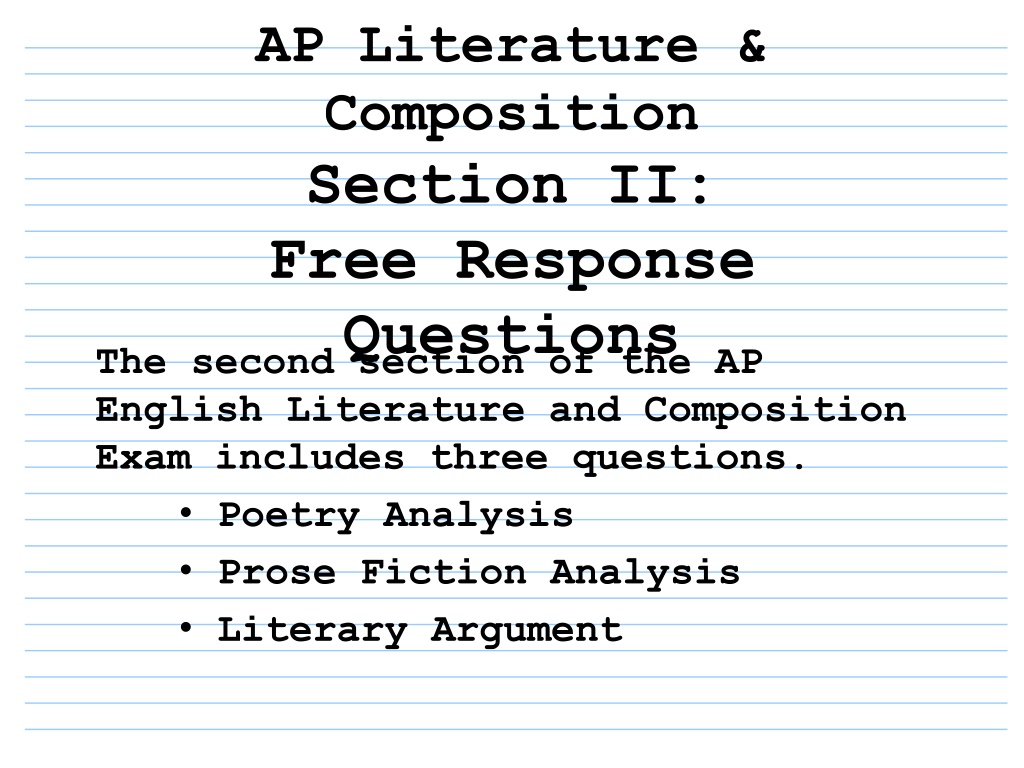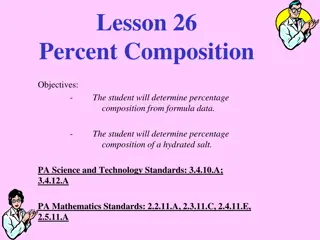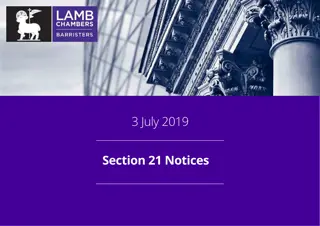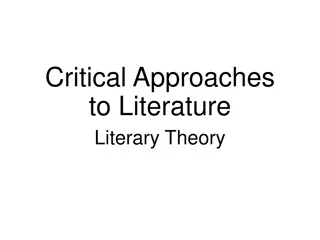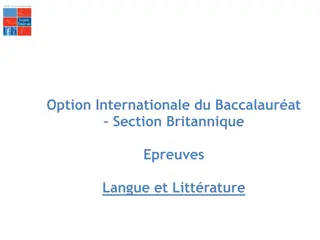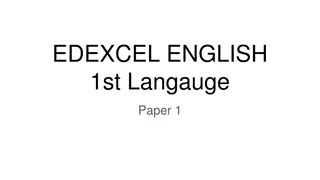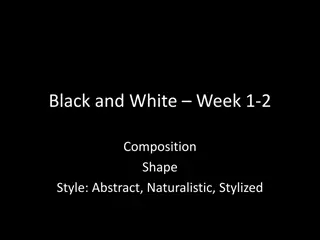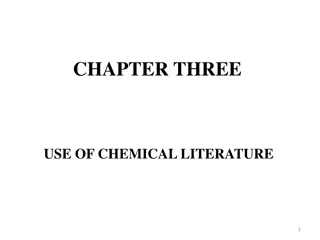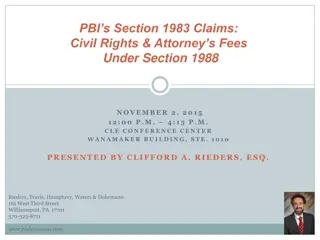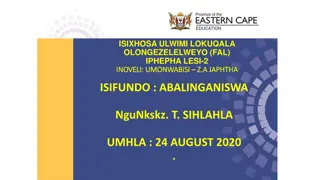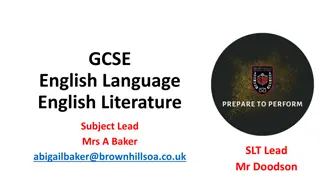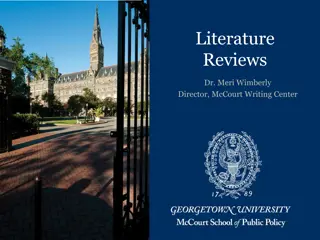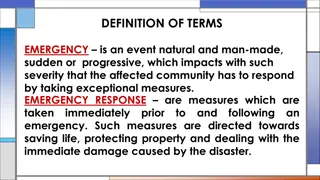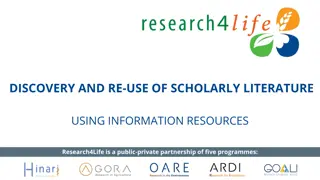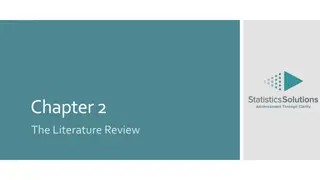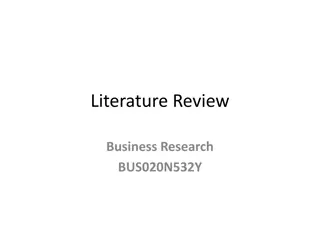AP Literature & Composition Section II: Free Response Questions Overview
The AP Literature and Composition Section II comprises three types of free-response questions: Poetry Analysis, Prose Fiction Analysis, and Literary Argument. Each question assesses students' ability to analyze literary works and develop coherent arguments supported by evidence.
Download Presentation

Please find below an Image/Link to download the presentation.
The content on the website is provided AS IS for your information and personal use only. It may not be sold, licensed, or shared on other websites without obtaining consent from the author. Download presentation by click this link. If you encounter any issues during the download, it is possible that the publisher has removed the file from their server.
E N D
Presentation Transcript
AP Literature & Composition Section II: Free Response Questions The second section of the AP English Literature and Composition Exam includes three questions. Poetry Analysis Prose Fiction Analysis Literary Argument
Free-Response Question 1: POETRY ANALYSIS Free-response Question 1 presents students with a passage of poetry of approximately 100 to 300 words. This question assesses your ability to do the following: Respond to the prompt with a thesis that presents a defensible interpretation. Select and use evidence to develop and support your line of reasoning. Explain how the evidence supports your line of reasoning. Use appropriate grammar and punctuation in communicating the argument.
Free-Response Question 1: POETRY ANALYSIS Sample Question: In the following poem Plants by Olive Senior (published in 2005), the speaker portrays the relationships among plant life and the implied audience. Read the poem carefully. Then, in a well-written essay, analyze how Senior uses poetic elements and techniques to develop those complex relationships.
Free-Response Question 1: POETRY ANALYSIS Stable Prompt Wording: In the following poem[or excerpt from poem] by [author, date of publication] the [comment on what is being addressed in the poem]. Read the poem carefully. Then, in a well- written essay, analyze how [author] uses [poetic or literary] elements and techniques to [convey/portray/develop a thematic, topical, or structural aspect of the poem that is complex and specific to the passage of the poem provided]
Free-Response Question 1: POETRY ANALYSIS Stable Prompt Wording Example: In the following poem Plants by Olive Senior (published in 2005), the speaker portrays the relationships among plant life and the implied audience. Read the poem carefully. Then, in a well-written essay, analyze how Senior uses poetic elements and techniques to develop those complex relationships. The text in italics will vary by question, while the remainder of the prompt will be consistently used in all Poetry Analysis essay questions.
Free-Response Question 2: PROSE FICTION ANALYSIS Free-response Question 2 presents students with a passage of prose fiction of approxi-mately 500 to 700 words. This question assesses your ability to do the following: Respond to the prompt with a thesis that presents a defensible interpretation. Select and use evidence to develop and support your line of reasoning. Explain how the evidence supports your line of reasoning. Use appropriate grammar and punctuation in communicating your argument.
Free-Response Question 2: PROSE FICTION ANALYSIS Sample Question: The following excerpt is from an 1852 novel by Nathaniel Hawthorne. In this passage, two characters who have been living on the Blithedale farm a community designed to promote an ideal of equality achieved through communal rural living are about to part ways. Read the passage carefully. Then, in a well-written essay, analyze how Hawthorne uses literary elements and techniques to portray the narrator s complex attitude towards Zenobia.
Free-Response Question 2: PROSE FICTION ANALYSIS Stable Prompt Wording: The following excerpt is [text and author, date of publication].In this passage, [comment on what is being addressed in the passage]. Read the passage carefully. Then, in a well- written essay, analyze how [author] uses literary elements and techniques to [convey/portray/develop a thematic, topical, or structural aspect of the passage that is complex and specific to the passage provided].
Free-Response Question 2: PROSE FICTION ANALYSIS Stable Prompt Wording Example: The following excerpt is from an 1852 novel by Nathaniel Hawthorne. In this passage, two characters who have been living on the Blithedale farm a community designed to promote an ideal of equality achieved through communal rural living are about to part ways. Read the passage carefully. Then, in a well-written essay, analyze how Hawthorne uses literary elements and techniques to portray the narrator s complex attitude towards Zenobia. The text in italics will vary by question, while the
Free-Response Question 3: LITERARY ARGUMENT Free-response Question 3 presents students with a literary concept or idea, along with a list of approximately 40 literary works. Students are required to select a work of prose fiction either from their own reading or from the provided list and analyze how the literary concept or idea described in the question contributes to an interpretation of the work as a whole. This question assesses your ability to do the following:
Free-Response Question 3: LITERARY ARGUMENT Respond to the prompt with a thesis that presents a defensible interpretation. Provide evidence to support your line of reasoning. Explain how the evidence supports your line of reasoning. Use appropriate grammar and punctuation in communicating your argument.
Free-Response Question 3: LITERARY ARGUMENT Sample Question: Many works of literature feature characters who have been given a literal or figurative gift. The gift may be an object, or it may be a quality such as uncommon beauty, significant social position, great mental or imaginative faculties, or extraordinary physical powers. Yet this gift is often also a burden or a handicap.
Free-Response Question 3: LITERARY ARGUMENT Sample Question Continued: Either from your own reading or from the list below, choose a work of fiction in which a character has been given a gift that is both an advantage and a problem. Then, in a well-written essay, analyze how the gift and its complex nature contribute to an interpretation of the work as a whole. Do not merely summarize the plot.
Free-Response Question 3: LITERARY ARGUMENT Stable Prompt Wording: [Lead that introduces some concept or idea that students will be asked to apply to a text of their choosing.] Either from your own reading or from the list below, choose a work of fiction in which [some aspect of the lead is addressed]. Then, in a well- written essay, analyze how [that same aspect of the lead] contributes to an interpretation of the work as a whole. Do not merely summarize the plot
Free-Response Question 3: LITERARY ARGUMENT Stable Prompt Wording Example: Many works of literature feature characters who have been given a literal or figurative gift. The gift may be an object, or it may be a quality such as uncommon beauty, significant social position, great mental or imaginative faculties, or extraordinary physical powers. Yet this gift is often also a burden or a handicap. The text in italics will vary by question, while the remainder of the prompt will be consistently used in all Literary Argument essay questions.
Free-Response Question 3: LITERARY ARGUMENT Stable Prompt Wording Continued: Either from your own reading or from the list below, choose a work of fiction in which a character has been given a gift that is both an advantage and a problem. Then, in a well-written essay, analyze how the gift and its complex nature contribute to an interpretation of the work as a whole. Do not merely summarize the plot. The text in italics will vary by question, while the remainder of the prompt will be consistently used in all Literary Argument essay questions.
